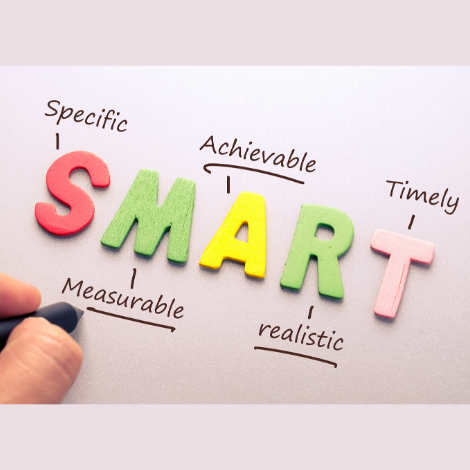
What is Life Coaching?
Life Coaching is simply the art of finding solutions to your clients problems and then setting a plan to overcome their challenge to reach for the life they want.
"As a Life and Mindset Coach, one of the easiest ways to shift to a more positive mindsets is to find a clients dream for the future, then start by setting small goals to start them on their journey to beliving their dream life is actually possible! From there, anything can happen!"
One of the easiest ways to set the right goals is to use some kind of Goal Setting Model. A common one is the SMART model which I outline below.
If you would love to know more about me, Award-Winning Life and Mindset Coach Jenni Donato, why not check out my Free Resources Here
Why use the SMART Model?
The SMART Model is a way of ensuring the goals you set are achievable, measurable and timely.
Not setting goals can leave us standing still, but setting the wrong goals can be even more disastrous and can leave us feeling like we 'failed' or that the future we want is simply not possible!
The chances are that if a goal does not meet the majority of the SMART Model it will not be measurable or achievable and the chances of 'failing' at it are much higher.
SMART stands for the following:

Specific Goal Setting
Any goal set needs to be specific.
A vague goal is rarely fully achieved as there is no way of telling when and how it has been accomplished. With any goal the following questions can be asked to narrow down a more specific goal.
- What do I want to achieve?
- Where do I want to achieve it?
- How, exactly?
- With whom?
- What are the limitations/challenges?
- Why do I want to achieve this specific goal?
Measurable Goal Setting
Next, the goal needs to have some accountable aspect which lets the client know when they have achieved it. We need to ask following questions
- How much of something do I need?
- What is my goal in terms of numbers/weight/money?
- How will I know when I have achieved the goal?
If at least one of these questions is not easily answered then it generally means an impossible or unachievable goal has been set.
Example - To be rich you need to know whether you would be happy with a set amount of money in the bank (after a set amount of time) or whether you would be more happy with a certain type of lifestyle (after a set amount of time). In this example, if the definition is to pay off a mortgage, this is easily measurable as there will be a total figure which can be split down into saving specific amounts per month.
Sometimes goals are harder to reach and out of the client's control, for example, someone wanting to meet their life partner. In this case, the process the coach would undertake would mean setting specific, measurable goals which will help them stand the best chance of reaching their ultimate goal. In this example, a specific goal may be to go and socialise with new people, or new friends, at least twice a month.
Attainable Goal Setting
The next part of goal setting includes determining that the goal is ultimately achievable. Questions could include -
- Can this actually be accomplished?
- Given the specific constraints, how realistic is this goal?
The first question is generally about how realistic a goal is in general. The second is much more personal to the individual involved, for example, if the goal was to be a policeman and the individual had no qualifications and a criminal record, this could be an unrealistic goal.
Relevant Goal Setting
The goals have to be relevant to the client and the ultimate goal.
- Is this actually worth achieving?
- Is this the right time?
- Is the effort in line with the rewards?
These questions can be difficult to answer honestly, so this could be something the client could take away and discuss with someone close to them.
Relevant goals are a better use of time and can lead to more motivation and help prioritise what is ultimately important to your client.
Timely Goal Setting
In all cases, goals need to have a time limit or time dimension to them.
Parkinson's Law - This states that generally, a task will take as long as the allocated time given to achieve it. Generally, people leave their goals until they start to worry about whether they have enough time to complete them. By allocating shorter time frames to complete tasks, they will get done quicker with less idle time at the start of the process.
Planning Fallacy - People are generally optimistic and over the promise of work and deadlines.
The difficult part is to get a balance between Parkinson's Law and the Planning Fallacy in order to give the urgency required to get the client to prioritise and start working on the goal, but give enough time to complete the goal effectively.
The following questions could be used and the goal split into different timely deadlines
- When exactly should this be done?
- What should be done by the end of today?
- What should be done by the end of this week?
- What should be done by the end of the month?
- When should the goal be completed?
To find out more about me, Award-Winning Life and Mindset Coaching Jenni Donato, connect with me on Facebook, or take advantage of my FREE Resources.** Or if you're ready to take the next step and work with me to realise your dream future, book a FREE Discovery Call with me NOW.**
